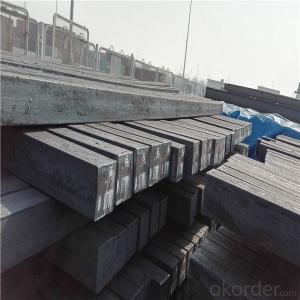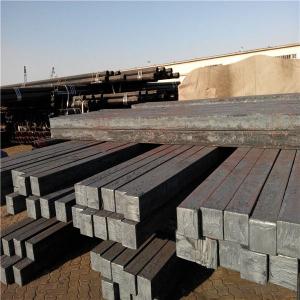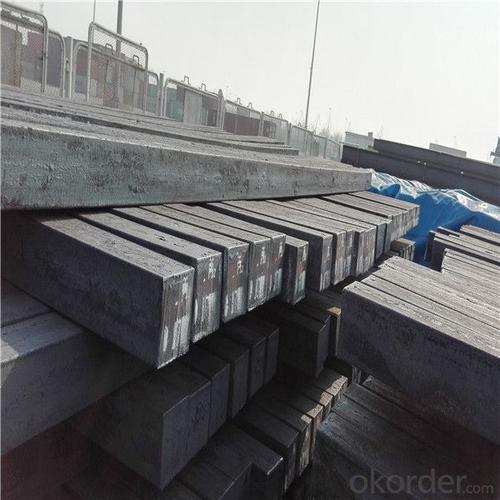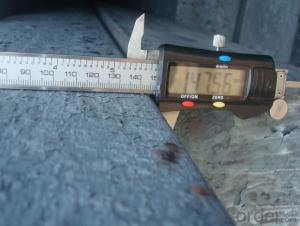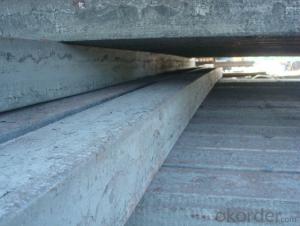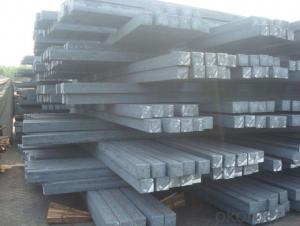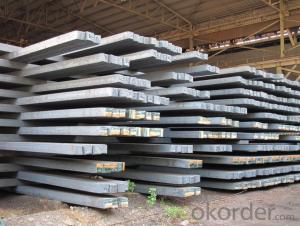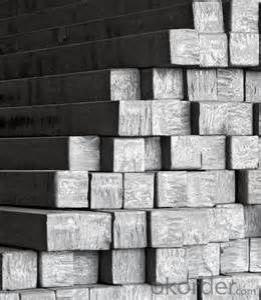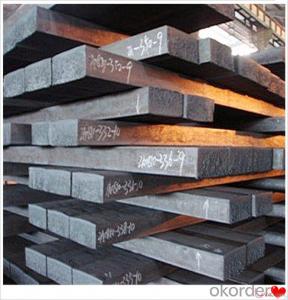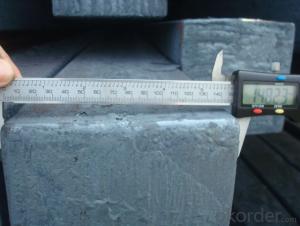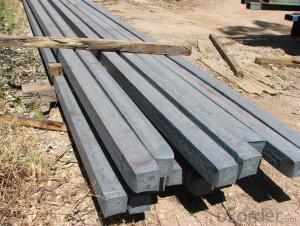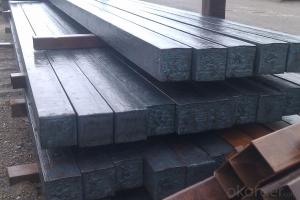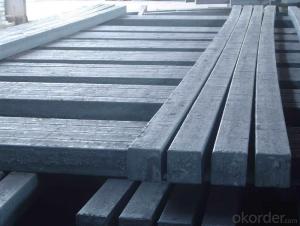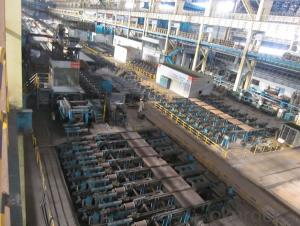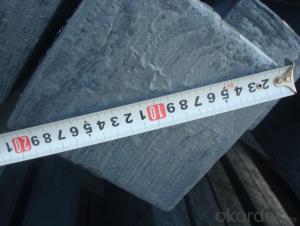Q275 Prime Steel Billet for hot roll steel prosucts
- Loading Port:
- Guangzhou
- Payment Terms:
- TT OR LC
- Min Order Qty:
- 1000 m.t.
- Supply Capability:
- 19983 m.t./month
OKorder Service Pledge
OKorder Financial Service
You Might Also Like
Specification
Billets, or ingots (as they sometimes referred to), are not of practical use until they have been formed into
more functional shapes and sizes. While they have already been put in the furnace, they still require a series
of shaping and molding procedures such as hot and cold working, milling and cutting before they are sold in
hardware stores, or used for different applications. The unformed billets, however, can be used in striking
currency such as coins and as reserves, similar to gold bars.
Qaulity:own factory, stable quality
Tolerance: Strictly according to the G/B and JIS standard
Delivery time: within 45 days after receiving the L/C or advanced T/T payment.
Price term: FOB/CIF/ CFR according to clients requirements
.
Gade:
Standard | C(%) | Mn(%) | S(%) | P(%) | Si(%) |
Q195 | ≤0.12 | ≤0.50 | ≤0.040 | ≤0.035 | ≤0.30 |
Q235 | ≤0.20 | ≤1.40 | ≤0.045 | ≤0.045 | ≤0.35 |
Q275 | ≤0.22 | ≤1.50 | ≤0.045 | ≤0.045 | ≤0.35 |
20MnSi | 0.17-0.25 | 1.2-1.6 | ≤ 0.050 | ≤ 0.050 | 0.40-0.80 |
3SP | 0.14-0.22 | 0.40-0.85 | ≤ 0.050 | ≤ 0.040 | 0.05-0.15 |
5SP | 0.28-0.37 | 0.50-1.00 | ≤ 0.050 | ≤ 0.040 | 0.15-0.30 |
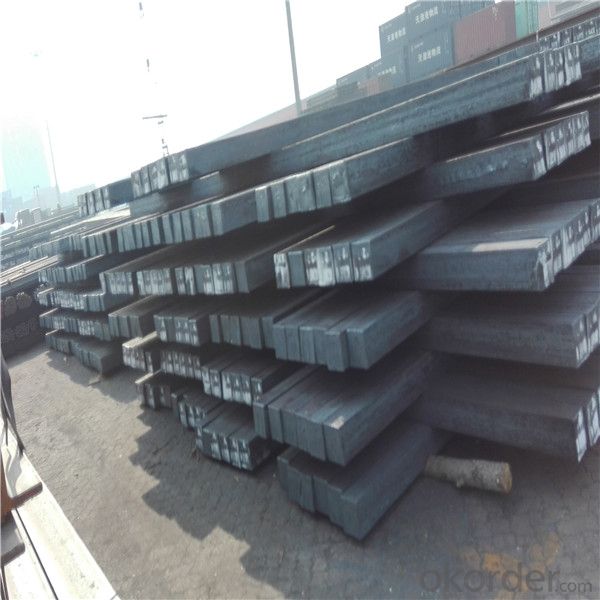
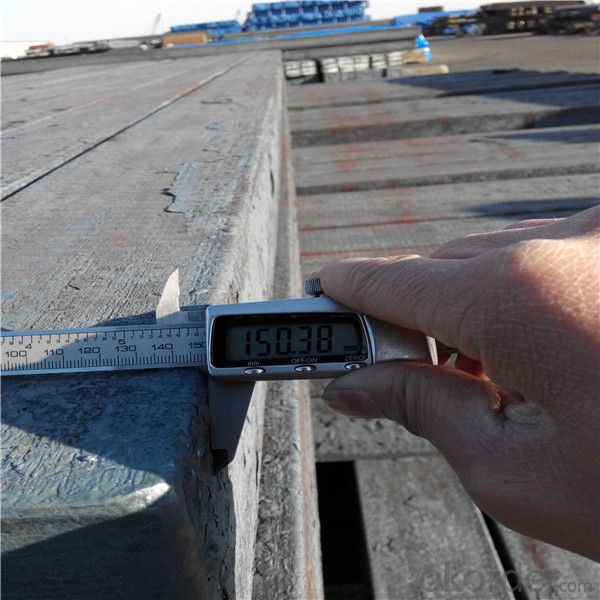
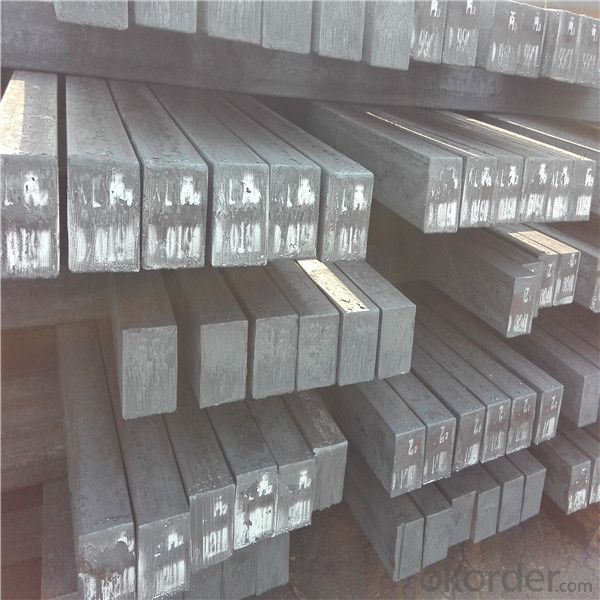
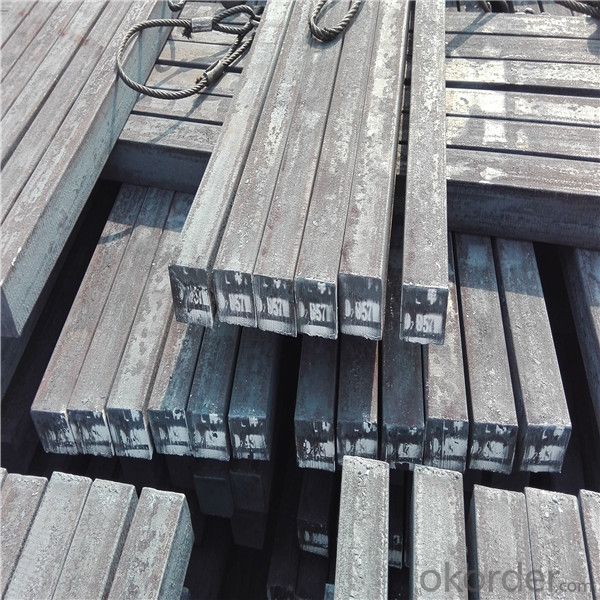
Our service :
We have a plant and professional team to provide our best service, from the start of production until the
loading into the vessel, we have a complete quality follow up procedure, to assure our products arrives to the customer with satisfaction. Welcome new and old customers
to contact us for future business relationships! We will give you a surpise price.
Packing :
Within 30 days
1.Standard export package
2.In bundles with steel strips
3.As the requirements of the customers
FAQ:
Q: What is payment terms?
A: FOB 30% T/T IN ADVANCE AS DEPOSIT AND 70% T/T BEFORE SHIPMENT
CIF and CFR 30% T/T IN ADVANCE AS DEPOSIT AND 70% T/T AS THE COPY OF B/L OR L/C AT SIGHT
Q:How to guarantee the quality of the products?
A:We have established the international advanced quality management system,every link from raw material
to final product we have strict quality test;We resolutely put an end to unqualified products flowing into the market.
At the same time, we will provide necessary follow-up service assurance.
Q:How long can we receive the product after purchase?
A :In the purchase of product within three working days, We will arrange the factory delivery as soon as possible.
The pecific time of receiving is related to the state and position of customers.
- Q: which companies are, and how the billet sales, how can we sell billet to ask for advice, thank you
- As for sales, one to information, two to high quality and low price, three to find relations.
- Q: How do steel billets compare to other types of metal billets?
- Steel billets generally have several advantages over other types of metal billets. Firstly, steel is known for its strength and durability, making steel billets a reliable choice for various applications. Steel billets also have excellent heat and corrosion resistance, enhancing their longevity and performance. Additionally, steel billets offer a wide range of alloying possibilities, allowing for customization and the creation of specific properties for different applications. Overall, the superior strength, durability, and versatility of steel billets make them a preferred choice in many industries compared to other types of metal billets.
- Q: Can steel billets be cold rolled?
- Steel billets cannot be cold rolled, as this process specifically involves reducing the thickness of a metal sheet or strip by passing it through a series of rollers at room temperature. Instead, steel billets are primarily utilized as raw material for producing steel bars, rods, and other long products through hot rolling. During hot rolling, the steel billets are heated to high temperatures and subsequently passed through rolling mills to achieve the desired shape and dimensions. Cold rolling is not appropriate for steel billets because it necessitates heating to enhance the steel's malleability and ability to deform, which cannot be achieved with solid, unheated billets.
- Q: What are the different methods of steel billet cutting and machining?
- There are several methods of cutting and machining steel billets, each with its own advantages and applications. Some of the most common methods include: 1. Sawing: This method involves using a saw blade to cut through the steel billet. It is a relatively simple and cost-effective method, suitable for cutting large quantities of billets into desired lengths. However, it may result in rough edges and require additional finishing processes. 2. Flame cutting: Also known as oxy-fuel cutting, this method uses a fuel gas combined with oxygen to create a high-temperature flame that melts and cuts through the steel billet. It is useful for cutting thick billets and can achieve a high level of precision. Flame cutting can be done manually or using automated machines. 3. Plasma cutting: This method employs a plasma torch to generate a high-velocity jet of ionized gas that melts and cuts through the steel billet. It is particularly effective for cutting through thick materials, as well as for intricate shapes and curves. Plasma cutting offers high cutting speeds and excellent precision. 4. Waterjet cutting: In this method, a high-pressure jet of water mixed with abrasive particles is used to cut through the steel billet. Waterjet cutting is versatile and can handle various materials, including steel, without generating heat-affected zones or causing distortion. It is ideal for cutting complex shapes and thin materials. 5. Laser cutting: Laser cutting involves using a high-powered laser beam to melt and vaporize the steel billet along a predefined path. This method offers exceptional precision and enables intricate and complex cuts. Laser cutting is commonly used for thin to medium thickness billets and is suitable for both small-scale and industrial applications. In addition to these cutting methods, there are various machining processes that can be applied to steel billets, such as milling, turning, drilling, and grinding. These processes involve removing material from the billet to achieve desired shapes, dimensions, and surface finishes. The choice of machining method depends on factors such as the complexity of the part, required tolerances, and production volume. Overall, the different methods of steel billet cutting and machining provide a range of options for manufacturers to effectively shape and process steel billets according to their specific requirements.
- Q: How can steel billets be customized for specific applications?
- Steel billets can be customized for specific applications through various processes such as heat treatment, alloying, and shaping. Heat treatment techniques like quenching and tempering can enhance the billet's strength, hardness, and toughness. Alloying elements can be added to improve specific properties like corrosion resistance or high-temperature performance. Additionally, the billets can be shaped through processes like rolling, forging, or extrusion to achieve the desired dimensions and form required for specific applications.
- Q: What are the potential applications of steel billets in the mining aftermarket?
- Steel billets possess a wide range of potential applications within the mining aftermarket. The manufacturing of heavy machinery and equipment utilized in mining operations represents one of the primary uses for steel billets. These components, including gears, shafts, and cylinders, necessitate high strength and durability to withstand the harsh conditions inherent in mining activities. Moreover, steel billets can also be employed in the creation of wear-resistant parts for mining equipment, such as cutting edges, buckets, and liners. Given the intense wear and tear endured by these parts, the use of steel billets guarantees their longevity and dependability. Additionally, steel billets find use in the construction of mine support structures, such as beams, columns, and frames. These structures play a crucial role in ensuring the stability and safety of mining operations, and steel billets provide the requisite strength and load-bearing capacity for their construction. Furthermore, steel billets can be utilized in the production of tools and accessories essential for mining activities. Drill bits, hammers, and chisels, for instance, demand high strength and toughness to effectively penetrate hard rock formations. Steel billets serve as the ideal material for fabricating these tools. In summary, the potential applications of steel billets within the mining aftermarket are extensive and encompass various aspects of mining operations. Ranging from the manufacturing of heavy machinery and equipment to the production of wear-resistant parts and mine support structures, steel billets provide the necessary strength, durability, and reliability required to optimize mining processes.
- Q: What are the potential applications of steel billets in the automotive sector?
- Steel billets have a wide range of potential applications in the automotive sector due to their strength, durability, and versatility. They can be used to manufacture various automotive components such as engine parts, chassis, suspension systems, and transmission components. Additionally, steel billets can be shaped and formed into different sizes and shapes to meet the specific requirements of automotive manufacturers. Overall, their potential applications in the automotive sector contribute to the production of safer, more efficient, and reliable vehicles.
- Q: Can steel billets be used for making tools?
- Yes, steel billets can be used for making tools. Steel billets are raw metal blocks that can be further processed and shaped into various tools through techniques like forging, machining, and heat treatment. The high strength and durability of steel make it an ideal material for tool manufacturing, as it provides the necessary hardness, toughness, and resistance to wear and tear.
- Q: What are the different surface treatments for improved corrosion resistance in steel billets?
- Steel billets can undergo different surface treatments to enhance their resistance to corrosion. These treatments aim to establish a protective barrier on the steel's surface, preventing corrosive agents from reaching the metal beneath. Some commonly used surface treatments for improved corrosion resistance in steel billets include: 1. Hot-dip galvanizing: Immersing the steel billets in molten zinc creates a galvanized coating, which is a zinc-iron alloy. This coating offers excellent corrosion resistance and prolongs the lifespan of the steel billets. 2. Electroplating: Through electroplating, a thin layer of metal such as zinc or nickel is applied to the steel billets using an electric current. This layer acts as a protective barrier against corrosion and provides an attractive finish. 3. Powder coating: By applying a dry powder mixture of resin and pigment to the steel billets and heating it, a durable and corrosion-resistant layer is formed. Powder coating is available in various colors and finishes. 4. Paint coatings: Applying corrosion-resistant paint to steel billets creates a protective barrier that hinders moisture and corrosive agents from reaching the steel. Multiple layers of paint can be added for enhanced durability and longevity. 5. Passivation: Passivation is a chemical process that eliminates free iron and contaminants from the steel billets' surface. This process prevents corrosion and encourages the formation of a protective oxide layer. Passivation is often combined with other surface treatments like electroplating or powder coating to enhance corrosion resistance. It is important to consider factors such as the billets' operating environment, desired lifespan, and cost considerations when choosing a surface treatment for improved corrosion resistance. A thorough evaluation of specific requirements and professional consultation are crucial in determining the most suitable treatment option.
- Q: What are the different surface finishes available for steel billets?
- There are several surface finishes available for steel billets, including mill finish, hot rolled pickled and oiled (HRPO), cold rolled, galvanized, and coated finishes. These finishes enhance the appearance, protect against corrosion, improve surface smoothness, and provide specific properties required for different applications.
Send your message to us
Q275 Prime Steel Billet for hot roll steel prosucts
- Loading Port:
- Guangzhou
- Payment Terms:
- TT OR LC
- Min Order Qty:
- 1000 m.t.
- Supply Capability:
- 19983 m.t./month
OKorder Service Pledge
OKorder Financial Service
Similar products
Hot products
Hot Searches
Related keywords
